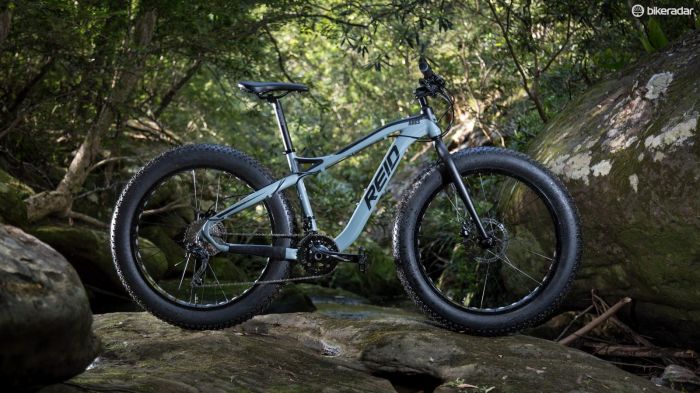
Fat bikes are an interesting breed, with a pretty niche use. If you’re not familiar, they’re designed for flotation either in sand or snow, but are still capable for all purpose trail riding (though it’s a pretty different experience). Yet for many of us, the price tag is too much to justify ‘yet another bike’.
Enter Reid, with its Ares fat bike (and its Zeus sibling, more on which below).
The Australian bike brand is best known for low cost consumer-direct bikes, and the Ares is no exception. In Australia the Ares costs a mere AU$799 so if you wanted to try a fat bike without breaking the bank, now you can. (It’s also shipping to the US, priced $1,060, and UK, pricing TBC. If you’re reading this from either side of the Atlantic, there’s an argument for reducing our rating by one star.)
As the company’s first foray into wide tyre machines, the Ares offers some wild frame tube shapes, a few interesting spec choices and a seriously fun ride.
Just lumbering along
At AU$799, the Ares falls into a budget category that few can compete with. With that, it isn’t going to wow you with newest brand name components, gobs of suspension travel, or lightweight anything — although you do get a Shimano XT front derailleur. But, nobody ever said something has to be fancy and expensive to be loads of fun, now did they?
We tested the Ares on everything we could find. It got a workout on some rough and technical singletrack around Sydney, and we even ventured up the picturesque Northern Beaches to see how the wide tyred machine attacked the sand and surf.
The ares proved to be pretty fun on the beach:
We definitely got some funny looks riding along Sydney’s Northern Beaches
When we got our hands on the Ares, it was only available in one size, though Reid says a full range is now in production. That said, Reid has nailed the geometry on our size medium (17-inch) tester. The 70-degree head angle keeps the clumsy bulbous rubber inline and makes for a surprisingly nimble ride. Combine that with a short 70mm stem and compact (for a fat bike) 455mm rear end, and you’ve got a surprisingly agile ride. It is, however, absolutely no lightweight at 15.33kg (33.73lb).
The ultra-wide 4in rubber allows you to simply roll over obstacles you’d usually have to think twice about on a standard mountain bike tyre. That said, the latest premium fat bikes have moved onward and outward from here, offering 4.5 and even 5in wide tyres for conquering the worst sand and snow.
The TIG-welded alloy frame features radical hydroformed tube shapes, and clean tube junctions – something by no means guaranteed on a bike at this price. There’s no detectable flex through the chassis, and the robust frame and fork add to the precision of the handling.
Front and back quick releases are to be expected at this pricepont, but can cause headaches with rotor alighment and are the weak point in an otherise solid front end:
The Ares sees front and rear quick releases
While it’s no doubt a result of budget constraints, the front and rear quick releases are somewhat of a let down. Especially when running low tyre pressures, there’s noticeable steering feedback from the braking force, and extra care is needed to ensure proper quick-release lever tension and brake alignment. Under a heavy load we actually managed to rip the rear wheel out of the dropouts, before learning to really crank down on the quick release.
Unfortunately, the lack of noticeable give in the robust alloy frame translates into a rougher ride. Although inflating the 4in rubber well below 10psi did help with the small stuff, your body still has to absorb the big hits. This isn’t an issue riding down the beach, but hit real mountain bike trails and your body takes a beating.
Venturing up the coast, the Reid performed well with the wide rubber offering enough flotation to confidently ride at pace along the wet sand near the water, even the gloopy stuff the rolling surf had just wet. Now getting to the wet sand is a different story – in the deep, grainy dry stuff the Kenda rubber struggles to find traction and leaves you spinning for your life. Either way, it’s pretty fun!
[“source-bikeradar”]
